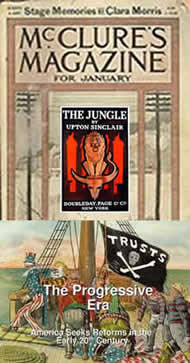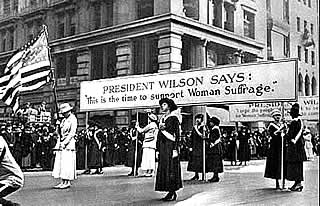
At the turn of the century in 1900 much of America was a tinderbox. Cities were crowded with millions of immigrants, working conditions were appalling, and corruption darkened politics from the local level to the highest institutions in the land. Something had to be done.
The Progressive Era actually started long before 1900 and continues in many ways to the present time, for American has been in the business of reform from its earliest existence as a nation. Yet the Progressive Era as designated by historians—roughly 1900 to 1916—was a “just in time” phenomenon. Had Progressivism for some reason not gotten off the ground, the country could well have seen far more violence and upheaval than actually happened. The prevalence of the Communist and Socialist Parties in the U.S. was evidence of that.
In the presidential election of 1924 Progressive Party candidate Robert M. La Follette, Sr. one almost 5 million votes and carried his home state of Wisconsin. His impressive showing helped lead to the election of Franklin Roosevelt, who had served in government under progressive Democrat Woodrow Wilson. In later years, Franklin Roosevelt and Lyndon Johnson would be seen as carrying on the Progressive Movement. “Progressive” politicians today are still seen as reformers. The beat goes on.
Readings
- Introduction
- The Roots of Progressivism
- The Progressive Era
- Theodore Roosevelt: Progressive
- Woodrow Wilson: Progressive
- The Socialist Alternative
- Important Dates of the Progressive Era
Documents
- George: Progress and Poverty
- Steffens: The Shame of the Cities
- Jacob Riis: How the Other Half Lives
- Jacob Riis on Working Girls
- Addams on Women in Government
- Theodore Roosevelt on Progressivism
- T. Roosevelt on Labor
- T. Roosevelt on Conservation
- Woodrow Wilson's New Freedom
- The Socialist Party Platform of 1912
- Roosevelt's Acceptance Speech 1912
- Upton Sinclair: The Jungle
- Ida Tarbell, the Standard Oil Company

External Links
- Wright Brothers Museum
- Theodore Roosevelt Home
- Woodrow Wilson House
- Woodrow Wilson Home & Library
- Jane Addams's Hull House
- Triangle Shirtwaist Factory Fire
- Progressive Era Documents
- More Progressive Links
- Lincoln Steffens

| Sage History Home | Reconstruction | Gilded Age | Progressive | World Power |
| Resources Home | Twenties/New Deal | World War 2 | Cold War | Post-WW2 Domestic |